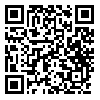Volume 3, Issue 5 (4-2013)
JRSM 2013, 3(5): 13-23 |
Back to browse issues page
Download citation:
BibTeX | RIS | EndNote | Medlars | ProCite | Reference Manager | RefWorks
Send citation to:



BibTeX | RIS | EndNote | Medlars | ProCite | Reference Manager | RefWorks
Send citation to:
Besharat M A, Ghahramani M H, Ahmadi N. Athletics impulsively traits: A comparison between contact and noncontact sports. JRSM 2013; 3 (5) :13-23
URL: http://jrsm.khu.ac.ir/article-1-1756-en.html
URL: http://jrsm.khu.ac.ir/article-1-1756-en.html
Abstract: (8907 Views)
The aim ofthisstudy was to investigatedifferentaspects ofimpulsivityin the athletes of contact and non-contactsports. volunteer participants were 60 athletes of contact (age: 25.9±4.6 years) and non-contact (age: 27.6±4.9 years) sports. Participants were asked to complete the Barratt’s Impulsivity Scale (BIS-11) and participate in continuous performance test(CPT). Multivariate analysis of variance results indicated that there was significant difference between athletes participating in contact and non-contact sports in the continuous performance test items(F2,117= 3.27, p=0.001, partial &eta2=0.89) and impulsivity scale factors(F3,116=47.66, p=0.001, partial &eta2=0.55).So that, in the attentional, motor, and non-planning impulsiveness and at the number of correct recognition in continuous performance test, the athletes of contact sports get more points than the athletes of non-contact sports. In contrast, the athletes of non-contact sports get more points in the average of incorrect time and the number of incorrect recognition than the athletes of contact sports. Therefore Thisfeature is effective in motor and non-motor behaviors of athletes in some special conditions that will appear as immediate and sustained function.
Type of Study: Research |
Published: 2013/04/15
Published: 2013/04/15
| Rights and permissions | |
 | This work is licensed under a Creative Commons Attribution-NonCommercial 4.0 International License. |





